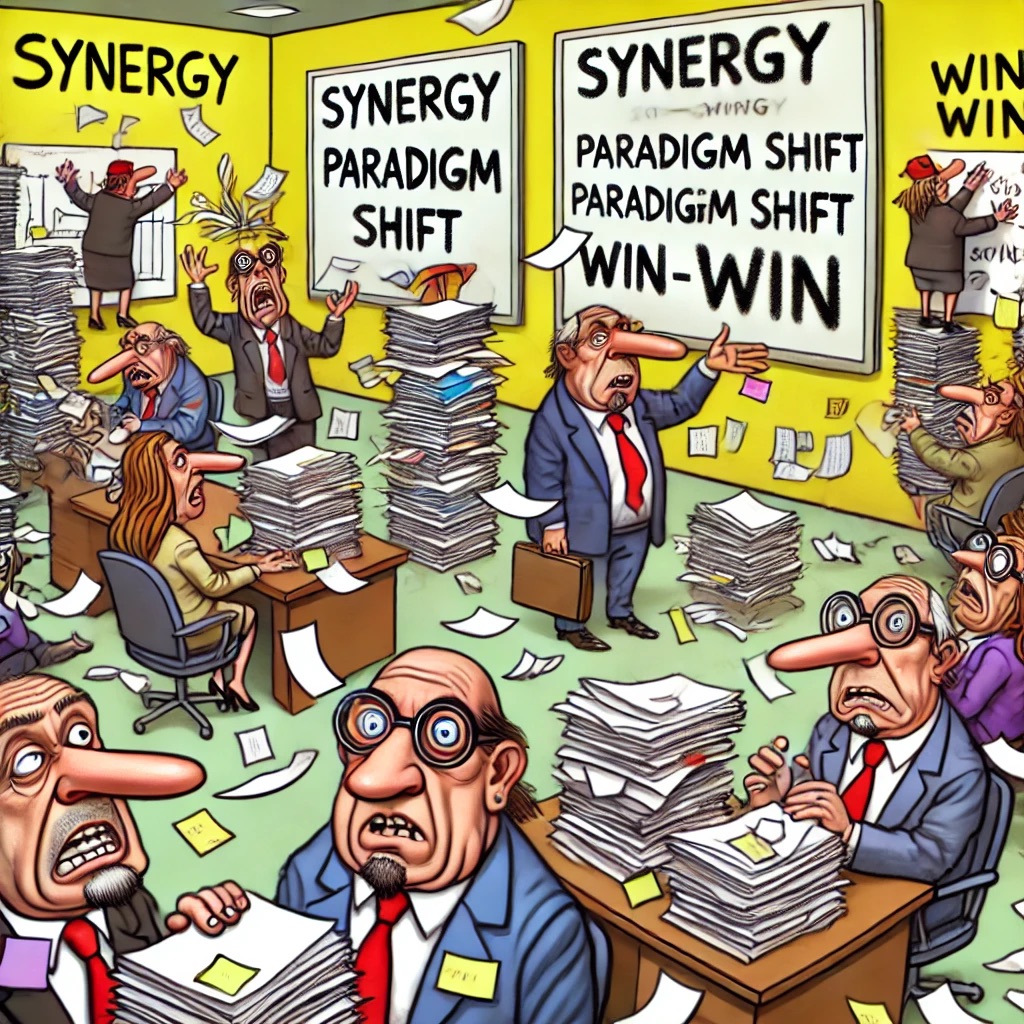Dedicate to:

In today’s fast-paced business world, everyone knows that communication is key. Or so I thought when I stepped into the chaotic offices of Company Y. Little did I know, my well-intentioned efforts to help would turn this mildly dysfunctional company into a full-blown circus of chaos.
The “Problem”
From the moment I entered Company Y, it was clear that things weren’t great. Employees were communicating mostly through passive-aggressive sticky notes, meetings were endless loops of jargon-filled nonsense, and management was convinced that “synergy” was the magic word that would solve all their problems.
But hey, nothing a seasoned communication consultant couldn’t fix, right?
The “Diagnosis”
After a week of intense observation, which mostly involved me awkwardly standing in corners during meetings, I concluded that Company Y suffered from what I called “a severe lack of communication feng shui.” Departments were not just in silos; they were in bunkers, armed and ready to fend off any attempts at collaboration. Feedback was either as rare as a unicorn sighting or as harsh as a Gordon Ramsay critique.
Clearly, this company needed a communication overhaul.
The “Plan”
I devised a master plan, confident that it would revolutionize Company Y and make me the hero of the story. Spoiler: I was wrong.
- Trust Through Transparency (aka Oversharing): I suggested that leadership start sharing everything in all-hands meetings. And by everything, I mean everything. Soon, employees were bombarded with detailed reports on the company’s financial woes, the CEO’s vacation mishaps, and the CFO’s ongoing battle with gluten intolerance. Rather than building trust, it bred anxiety, confusion, and a newfound appreciation for ignorance.
- Cross-Departmental Collaboration (aka Forced Friendships): I thought forcing—er, encouraging—employees from different departments to work together would spark innovation. Instead, it sparked a series of passive-aggressive emails, awkward coffee breaks, and the creation of several underground “anti-collaboration” clubs. These clubs were surprisingly well-organized, probably because they didn’t involve people from different departments.
- Training and Development (aka Rehashing HR Clichés): We rolled out mandatory communication workshops where employees learned the fine art of “active listening,” which mostly involved them staring blankly at each other while nodding excessively. The conflict resolution training was particularly memorable, as it led to several heated arguments over the best way to resolve conflicts. In the end, more conflicts were created than resolved.
The “Results”
In just six months, the transformation at Company Y was undeniable—and by that, I mean it was undeniably disastrous. Employee engagement dropped to a record low as people started actively disengaging from anything resembling work. Turnover rates soared, but it wasn’t just employees leaving—entire departments were fleeing in what could only be described as a mass exodus. Productivity didn’t just drop; it plummeted into an abyss from which it has yet to return.
Meetings became even more convoluted, with employees competing to see who could use the most buzzwords without actually saying anything. “Synergy” became a running joke, and someone started a black market for selling corporate jargon bingo cards. Morale was so low that even the office plants started wilting.
Conclusion
What was meant to be a journey from dysfunction to success turned out to be a one-way ticket to the land of perpetual chaos. Communication isn’t just about exchanging information—it’s also about knowing when to leave well enough alone. For Company Y, my intervention was the catalyst for a breakdown of epic proportions.
So, if your organization is teetering on the brink of dysfunction, remember this: sometimes, the best communication strategy is to just smile, nod, and back away slowly.



